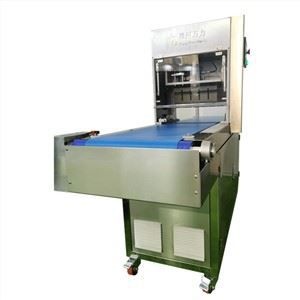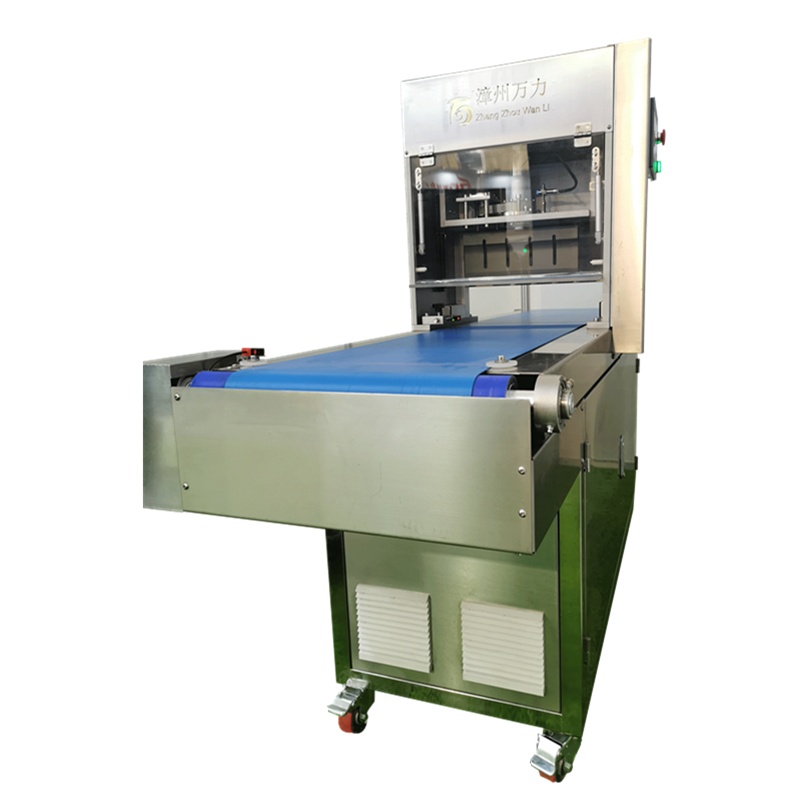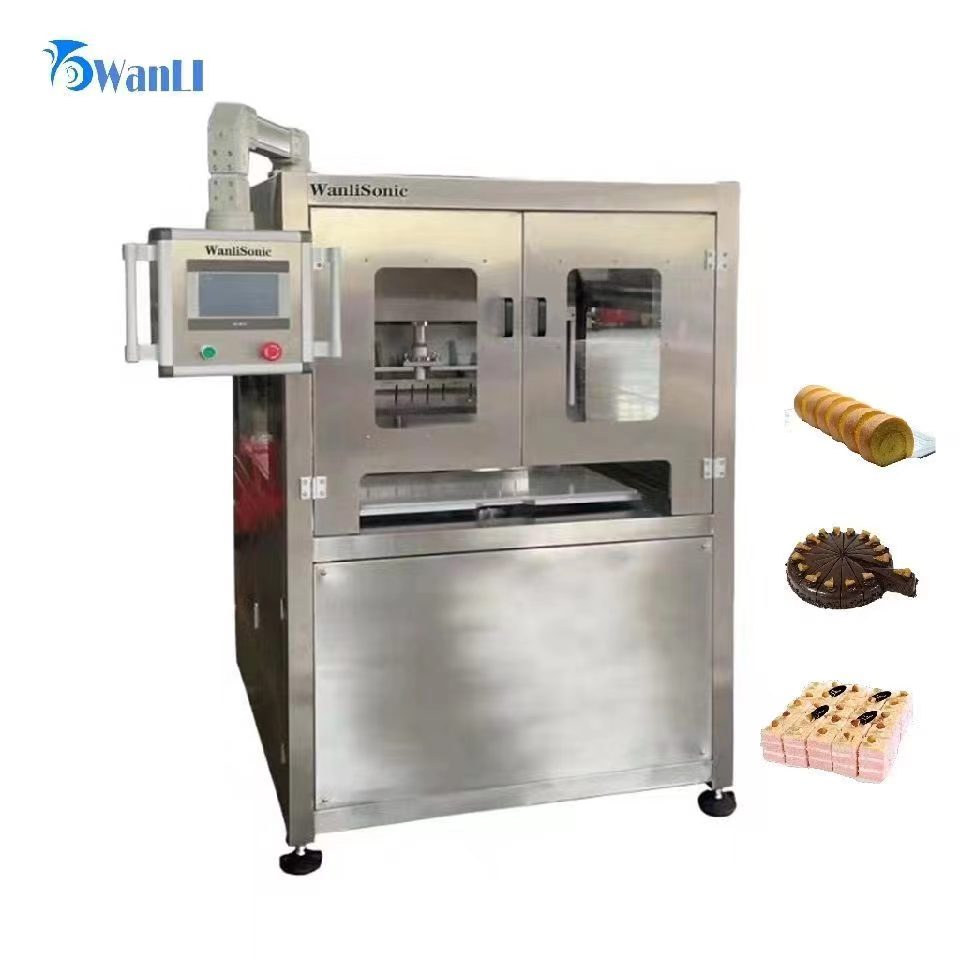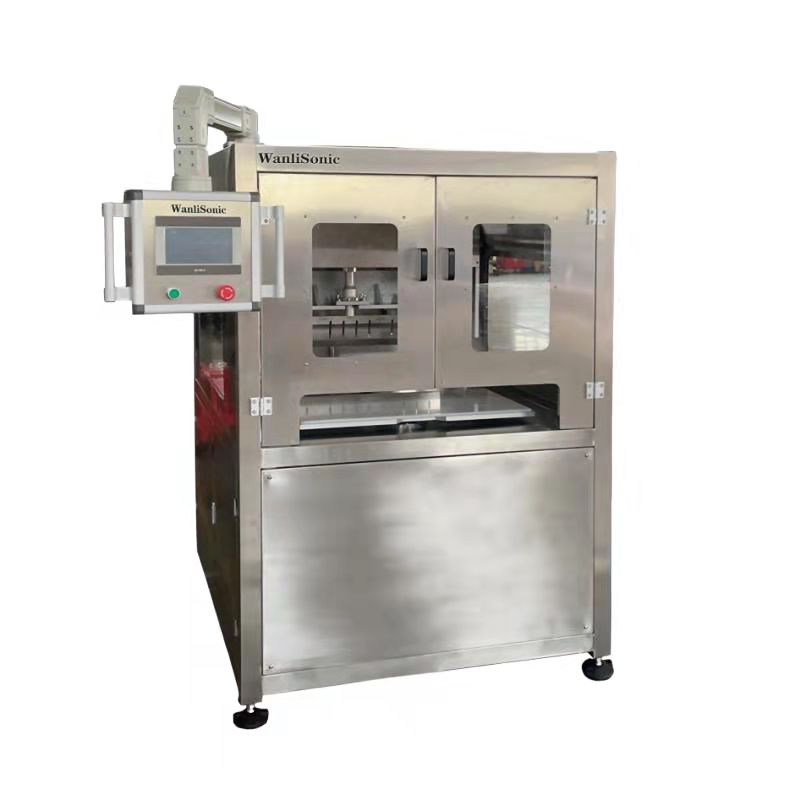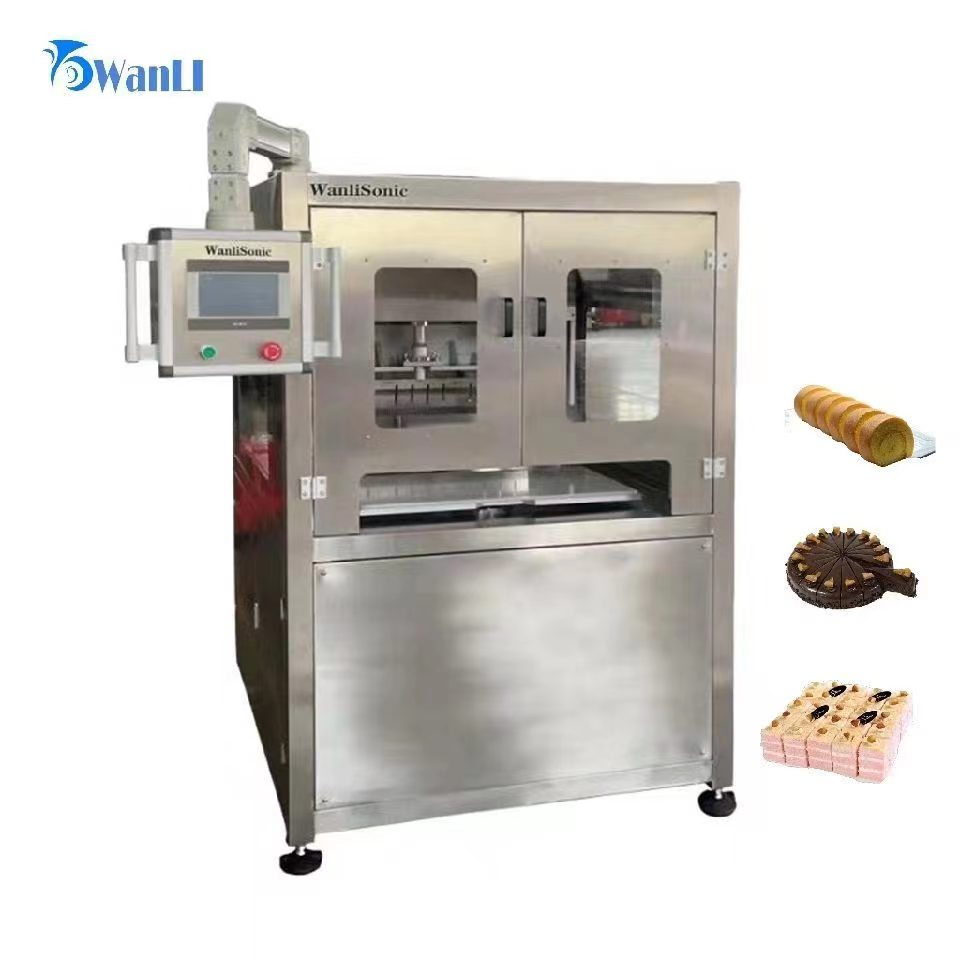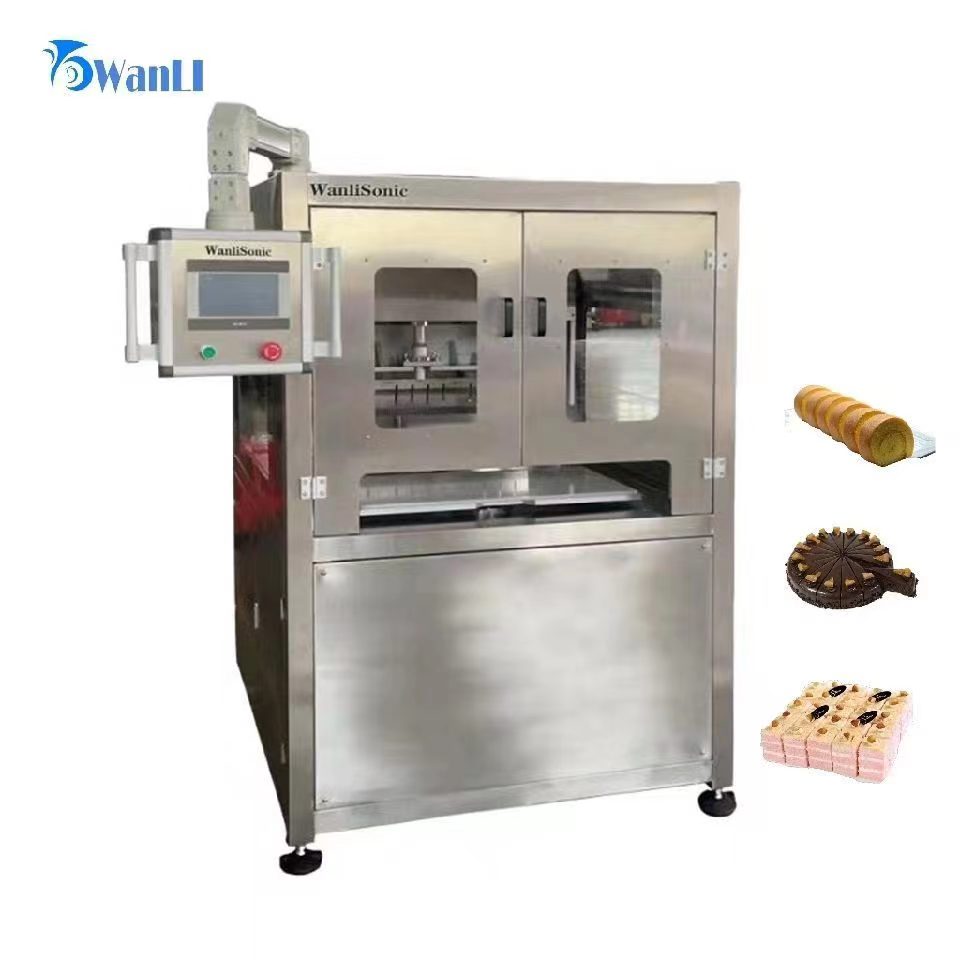Introduction of Ultrasonic Food Cutter
Compared with traditional cutting methods, Wanli ultrasonic food cutting machine has the characteristics of more hygienic cutting, easier cleaning of equipment, less downtime, better cost-effectiveness, more consistent cutting surface, and longer blade life.
The cutter head of Wanli ultrasonic food cutting machine is manufactured by a precise wire cutting process, which reduces stress and prolongs the service life. Wanli can fully customize OEM components, kits and bits. Typical applications include cheese cutting; cake and dessert cutting; candy cutting; meat cutting; sandwich and packaging cutting.
Ultrasonic food cutting is a process that utilizes a tool that vibrates at high frequencies. The application of ultrasonic vibrations to the tool creates a virtually frictionless cutting surface, which provides many benefits for cutting. This low-friction cutting surface slices many foods cleanly without crumbs.
Foods containing items such as vegetables, meat, nuts, berries and fruits can be cut without deforming or shifting the internal products. The low friction conditions also reduce the tendency for products like nougat and other fondant to stick to the knife, resulting in a more even cut. Since the ultrasonic generator has advanced process control functions, the performance of the ultrasonic food cutter can be easily controlled by simply adjusting the equipment parameters.
Wanli ultrasonic food cutting machine consists of the following components:
1.Ultrasonic generator (power supply)
The ultrasonic generator converts the power supply current of 110VAC or 220VAC into a high-frequency high-voltage electrical signal.
2.Ultrasonic converter (transducer)
Ultrasonic transducers take high-frequency electrical signals from an ultrasonic generator and convert them into linear mechanical motion.
This conversion is performed by using a piezoelectric ceramic disk that expands when a voltage is applied. Ultrasonic transducers for food cutting systems are specially designed to bring in and out of air for cooling.
3.Ultrasonic booster (horn)
An ultrasonic horn is a tunable component that mechanically adjusts the amount of displacement of the transducer's linear vibration to the level required for a particular application to produce optimal cutting performance. Ultrasonic horns also provide a safe, vibration-free location for mounting on cutting tools.
The horn used in the food cutting system is a one-piece, one-piece titanium design for maximum cutting accuracy and repeatability. Additionally, the one-piece design allows for thorough flushing, unlike multi-piece ultrasonic horns that can contain bacteria.
4.Ultrasonic cutting tool head (knife head)
An ultrasonic cutting tip is a custom tool designed to vibrate at a specific frequency. These tools are carefully designed using computer modeling techniques for optimum performance and longevity.
The ultrasonic tip must be tuned to match the frequency of the system. This tuning procedure takes into account the mass, length and geometry of the tool head. Titanium has good anti-resonance and anti-fatigue properties and is the material of choice for ultrasonic tool heads. Titanium also meets the hygiene requirements of the food processing industry. Due to the high stress of the thin-sheet geometry required for the blade of the Wanli ultrasonic food cutting machine, it should be fabricated using a wire EDM and subsequent stress relief process to maximize tool life.
5.The head of the ultrasonic food cutter
Material cutting system correct positioning and movement of food and ultrasonic cutter heads requires automated machines. Automation is critical to achieving the correct cut position, direction and speed. Typically, these processing systems utilize servo-driven mechanisms to precisely control the speed and position of the food and cutting tools.
Factors to be considered in the food cutting process
1.Equipment start-up time
Ultrasonic cutting tool heads are challenging to design and manufacture due to the need for narrow blade designs. Vibrating the tip at maximum amplitude without load can sometimes cause premature tip failure. Therefore, the signal from the sonotrode should be synchronized with the automated machine to allow the knife head to vibrate sufficiently before the knife edge comes into contact with the food. Vibration prior to contact is necessary to avoid deformation of the food product that would be caused by contact with non-vibrating cutting surfaces.
2.Vibration amplitude
The term "amplitude" describes the microscopic displacement of the vibration of the cutting surface of the tool head. The amplitude is adjusted mechanically by the ultrasonic horn and digitally by the ultrasonic generator. The magnitude of the amplitude affects the cutting process and must be adjusted to suit the needs of each application.
3.Cutting speed
The speed at which the Wanli ultrasonic food cutting machine enters and advances through the material being cut is also a process variable and should be adjusted for each cutting process. Sometimes it is necessary to penetrate the shell of the product slowly to avoid deformation, and then increase the speed of the cutter in the product to achieve the best cutting effect.
4.Vibration end time
Depending on the consistency of the material being cut, the finished slices may tend to stick to the sides of the cutting knife after the ultrasonic vibration is turned off. As a result, maintaining the ultrasonic vibration as the tool head is removed from the product allows for a cleaner, consistent release of the cutter with the frictionless nature.
The attractiveness of ultrasonic food cutting
1.Cleaner cuts
Always produce a clean, even cut surface, cutting multi-layer composites (sandwiches) and nuts without displacement.
Precision cutting difficult-to-machine products
Easily slice products such as natural food cakes without warping or crumbling, as well as tough buns and bagels.
2.Higher productivity leads to greater throughput
Ultrasonic provides faster cuts and cuts than traditional blade systems, and smaller cuts help reduce waste.
3.Reduce cleaning downtime
Ultrasonic systems provide longer run times during cleaning cycles and ease of cleaning, reducing cleaning downtime by 70 to 90 percent.
4.High-quality materials meet the highest standards in the food industry
Equipment is constructed of stainless steel and titanium to ensure improved hygiene, safety and processability.
5.Minimal surface friction
Ultrasonic tool head blades are sharper than stationary blades, increasing productivity and reducing maintenance.
6.24/7 operation
wanli ultrasonic cutting systems are engineered and engineered to perform day in and day out in the harshest machining environments.
Wanli product features
Wanli ultrasonic food cutting machine may not be suitable for all food cutting operations. However, high frequency vibration applied to cutting tools does have clear advantages. Ultrasonic food cutting is not necessarily suitable for all food cutting operations. However, the application of high frequency vibration to the tool does offer significant advantages. First, ultrasonic technology improves cut quality and consistency and provides the ability to cleanly slice soft foods without distortion. wanli can evaluate key factors in food cutting operations to determine if the low friction cutting surface of the ultrasonic knife is suitable.

